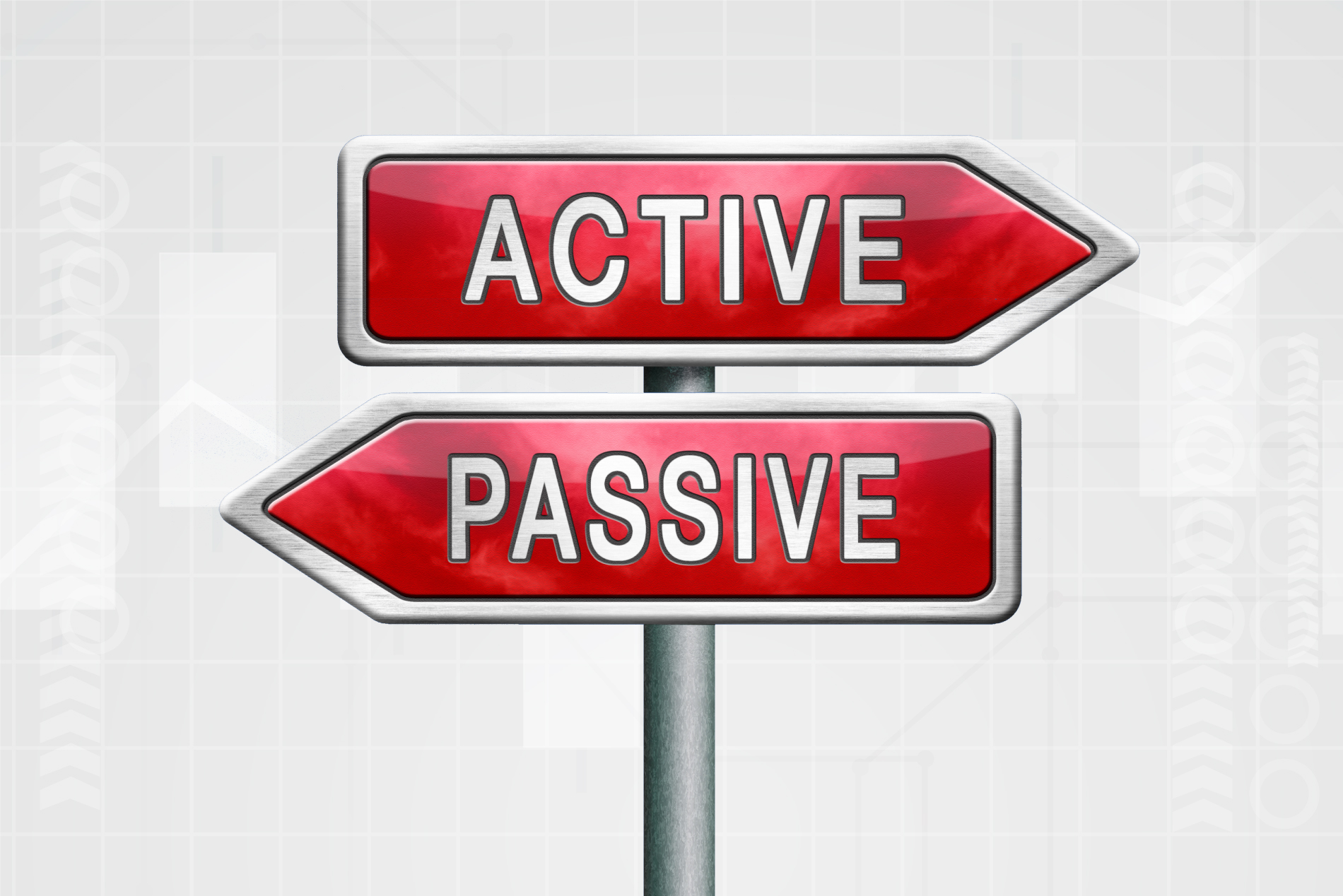Tuesday, January 10, 2023
Active vs passive investing: What's the difference?
تم إعداد هذا المنشور من قبل سنشري للاستشارات

.jpg)
Active and passive investing are two contrasting forms of stock market investment that occupy different trading horizons. Largely dependent on an investor's personal choice, one is generally preferred over the other. So how do they differ, and how can traders find the best style suited for them? Let's find out.
What are active and passive investing?
In the most oversimplified terms, active and passive investing is the difference one would see between a Warren Buffet and a John Bogle form of investing. Buffet identifying stocks trading at discounts to their fair value and having a solid margin of safety epitomizes active trading. Indices trading with an active fund manager often comes into play with an effort to beat the market index.
Passive trading, on the other hand, is along the lines of John Bogle's Vanguard Principle - consistently investing in passive funds, like index exchange-traded funds (ETFs), which don't employ high-value fund managers to beat the market.
How are they different?
The basic understanding of active and passive investing points out the difference between the two forms of online trading. However, investors still need to dig deeper to understand which style will help them invest in stocks.

Active managers are not mandated to adhere to a specific index. They are free to purchase the stocks based on price and value information like one does in momentum trading. However, passive fund investors are locked into those assets regardless of what occurs in the market because they are restricted to a particular index or fixed set of investments with little to no variation.

Active investments centers around instant or small-time transactions like arbitrage trading and intraday trading. Thus, costs increase with active buying and selling, which incurs transaction charges. In addition, traders must pay attention to the fund managers' and analysts' fees from this mix. Since no one is selecting stocks, oversight is significantly less expensive in passive investing. Simple indices trading and tracking, staying focused, is perfect for this online trading style to be effective.

As their main holdings are locked in to track the market, passive funds will rarely outperform the market, even in tumultuous times. A passive fund is likely to outperform the market (mostly when the market surges), but it will never achieve the high returns active managers seek. On the other side, active managers have the potential to produce greater returns. However, such a share market investment strategy also carries higher risks.

With great returns come greater risks. For example, active managers risk loss if their analysis betrays them at any point in online trading. On the other hand, passive indices trading paints a clear picture of the assets in an index fund and, thus, seems safer.
A way for active managers to hedge their bets, especially when the risks are too high, is by applying short sales or put options to exit any particular stock or sector. Conversely, regardless of how that particular stock or sector is performing, passive managers will continue to stay investing in those stocks or sectors.

An astute portfolio manager or financial advisor can actively invest in stocks that reduce gains for tax purposes. This is known as tax-loss harvesting. Even while you can employ tax-loss harvesting with passive investing, active investment strategies provide more opportunities and make it simpler to evade the wash-sale rule due to the volume of trading that occurs.
Choosing between active and passive investing
In intraday trading or arbitrage trading for active investing or exchange-traded funds for passive investing, a trader must keep two determinants in mind:

Physical Settlement: It involves the actual delivery of the asset, a common practice for companies relying on commodities. Fuel for an airline company, for example.
Thus, sticking to only one online trading technique is not a trading norm. Instead, you can be experimental and try both ways to suit your financial goals.
Century Financial Consultancy LLC (CFC) is duly licensed and regulated by the Securities and Commodities Authority of UAE (SCA) under license numbers 2020000028 and 2020000081, to practice the activities of Trading broker in the international markets, Trading broker of the Over-The-Counter (OTC) derivatives and currencies in the spot market, Introduction, Financial Consultation and Financial Analysis, and Promotion. CFC is a Limited Liability Company incorporated under the laws of the UAE and registered with the Department of Economic Development of Dubai (registration number 768189).
CFC may provide research reports, analysis, opinions, forecasts, or information (collectively referred to as Information) through CFC’s Websites, or third-party websites, or in any of its newsletters, marketing materials, social media, individual and company e-mails, print and digital media, WhatsApp, SMS or other messaging services, letters, and presentations, individual conversations, lectures (including seminars/webinars) or in any other form of verbal or written communication (collectively referred to as Publications).
Any Information provided in this publication is provided only for marketing, educational and/or informational purposes. Under no circumstances is any Information meant to be construed as an offer, recommendation, advice, or solicitation to buy or sell trading positions, securities, or other financial products. CFC makes no representation or warranty as to the accuracy or completeness of any report or statistical data made in or in connection with this Publication and accepts no responsibility whatsoever for any loss or damage caused by any act or omission taken as a result of the use of the Information.
Please refer to the full risk disclosure mentioned on our website.

















